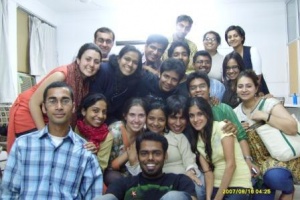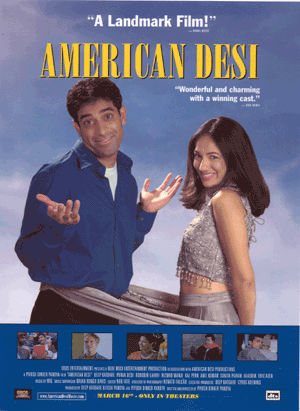From The Peopling of New York City
The North vs. South divide is a hot topic of debate both in India and among Indian immigrants in the United States. To some, the divide is more significant, and to others it has absolutely no meaning.
Adthya states in his article that this divide “may be a thing of the past” since today people “move around, live in other states and countries, together with different communities of India” and this divide slowly begins to fade away." (Source) This is very true to the neighborhood of Jackson Heights.
The families that live in Jackson heights come from all over the state of India. And when observing an ethnic group, it is difficult to make generalizations as every individual and family is different. Most of the time, languages and traditions are maintained within the home of Indian immigrants. But as the second generation of immigrants emerges, a few things begin to occur:
As the second generation grows up in New York City, the youth become much more removed from the lifestyle in India as they never had a chance to experience it fully themselves. Therefore, the traditional lifestyle becomes less strict and conserved, and some practices that might have been crucial in India, now become simple traditions. The cultural differences that divide North and South then become less clearly defined and important. Often Indian Youth even begin to identify themselves more as South Asian than Indian, which can be read about more in the “youth” page.
As a first generation immigrant, Reema recognizes how much less attached the second generation is to their regional culture: “1st generation is very aware of differences [between North and South] but the 2nd generation, which are kids that are born here don’t have ties to culture as much, and just see it as Indian culture even though they do know the differences.”(Reema Interview)
Furthermore, as second generation youth attend American schools, some aspects of American culture begin to integrate into the Indian culture that they grew up on. As English becomes the youth’s primary language, their traditional languages become less significant and the language divide between North and South begins to diminish as well. Kanushree Jain, who moved to Queens when she was two years old, admits that she herself has greatly assimilated to American culture, and is often called an “ABCD” or an “American Born Confused Desi” by her sister. She says that after growing up here, “I don’t see Indians as different if they are from a different region, to me you’re just Indian.” (Kanushree Interview)
Most youth do identify themselves as Indian, and the strength of their tie to their specific home region of India can be either very important to them, or not at all. But when pooled in a mix of cultures of Jackson Heights, a microcosm of the cultural diversity of New York City, what unites people is what they share, and not what differentiates them. The shopping center at Jackson Heights sells merchandise and food from certain places in India, and not necessarily from every immigrant’s home town. Indians must therefore conform to what’s available to them, and must often become less particular about where their possessions come from. For the same reason, Indians expand on their limits on whom they befriend, and begin to distinguish less between those from North and South.
Of course people will always relate further to people who are from the same home town as them; they will always have more of a common history and lifestyle. But as Reema said in her interview, “my parents always told met to be a good Indian girl—a good Indian girl, and not a good South Indian”
This divide becomes seemingly less and less important in our rising Indian American community in the United States.

